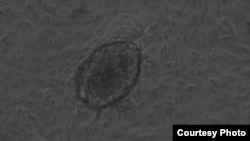Scientists have long been fascinated by the ability of amphibians, such as newts and salamanders, to regrow severed tails. One day, humans may be able to achieve a similar feat by repairing damaged hearts and brains.
Chinese researchers at the Gladstone Institutes’ Roddenberry Center for Cell Biology and Medicine in San Francisco have developed a chemical cocktail that can reprogram cells without genetic engineering. Their work lays the foundation for one day being able to regenerate lost or damaged cells with pharmaceutical drugs.
Writing in the journals Science and Cell Stem Cell, investigators describe how a combination of chemicals can turn readily available skin cells into stem cells — master cells that have the potential to become any cell in the body.
Sheng Ding is a regenerative medicine biologist at Gladstone Institutes. He led the team of researchers that identified nine chemical compounds that reprogrammed skin cells into heart cells. Transplanted into a mouse heart, the cells developed into healthy heart muscle cells.
"It's really the Holy Grail we've been working on now for decades," Ding said.
A separate group of researchers used a similar chemical process to alter skin cells into neural cells, to repair brain damage caused by disease.
Growing heart cells
A heart attack leaves dead tissue in its wake. Once damaged, those heart muscle cells — called cardiomyocytes — have very little ability to renew themselves. But with their chemical cocktail, Ding's team was able to take mouse skin cells and transform them into beating heart cells.
Previous work in tissue regeneration involved a laborious process of inserting specific genes into stem cells created from skin cells, then infusing the transformed cells into the body to create healthy tissue.
But now tissue repair could become a far simpler process, according to Ding.
"There is now a possibility that we can provide patients [with] a pill that contains this small molecule cocktail that really stimulates or regenerates to repair cells," he said.







